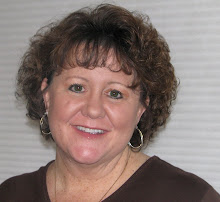
Physicians are taught to save lives. But when a patient has a terminal diagnosis, that is not always possible.
“Doctors do not like to come to terms with what can be viewed as their own failures,” said Sandpoint physician Tim Bonine. “But when a cure isn’t possible, we need to redefine success. We need to do what we can to keep our patients comfortable and help them reach their goals - whether it is a trip to the Grand Canyon or spending one last summer with their grandkids.”
And when that time comes, Bonine and other Sandpoint physicians turn to Bonner Community Hospice, a department of Bonner General Hospital.
“I am a big proponent of Hospice,” said Bonine.
Debra Kellerman, Executive Director of Bonner Community Hospice, says that people don’t make the decision to come to Hospice in a vacuum.
“Physicians play a significant role in encouraging eligible patients to consider hospice care,” said Kellerman. “Coming to the realization that curative care can no longer benefit a patient, brings the physician and the patient face-to-face with death. Helping patients understand the benefits of hospice care can help shift a patient’s focus to a more realistic situation and allow a patient to fully participate in their end of life care and decision-making.”
But according to Dr. Steven Puffer, medical director for Bonner Community Hospice, it has only been in the last 20 years that the American medical system has begun to educate doctors on palliative care.
“We still have the mindset of always looking at treatment options,” said Puffer. “But at least now (medical students) are doing rotations with hospice care.”
Sandpoint physician Dan Meulenberg says patients are not always receptive to hearing about Hospice; and he attributes that in large part due to the misconception people have about the organization.
“Sometimes it takes two or three times to bring it up before a family is receptive to it,” said Meulenberg. “The misconception that it’s (hospice care) for the last few weeks of life is totally erroneous.”
Puffer agrees saying that terminally ill patients are often unwilling to address the issue of their death.
“But it isn’t about a choice. It’s about the trajectory of your disease,” said Puffer.
Kellerman adds that while Hospice is considered the ‘gold standard’ for end of life care, many patients enroll in hospice only in the last weeks or days of life.
“Hospice is still thought of as a place of last resort; a last-ditch, brink of death kind of care,” said Kellerman. Although families perceive the value of hospice care in the last few days of a patient’s life, earlier referrals and longer hospice stays have greater benefits to improving the patient’s remaining quality of life.
“Ideally we would serve patients for months,” said Puffer. “But patients are coming too late.”
So when is it time for a physician to talk to the patient about Hospice?
“I am guided a lot by what a patient is voicing to me,” said Bonine.
He has seen patients who are 80 years old and do not want to go through chemotherapy or radiation but instead want to make the most of what time they do have left; and there are other patients who want to fight an illness up to the very end.
“When a patient tells me they want to get the best quality of life of what time they have left that is by definition Hospice,” said Bonine.
Puffer says part of the difficulty that doctors face is that they cannot predict exactly how long a patient has to live. “From a physician’s standpoint, we don’t have the tools to predict longevity,” he said. “We have to use the art of medicine instead of the science of medicine.”
Dr. Meulenberg says that once a patient ceases treatment by a specialist, the primary care physician once again steps in to take over the patient’s care and helps manage any pain the patient has. The history the primary care doctor shares with a patient can be a big advantage.
“As a primary care doctor we are there before (the diagnosis), during treatment and at the end and we’ll be there with the family when it’s over too,” said Meulenberg. He said having that type of relationship with a patient makes it easier for him to know when the time is right to approach a patient about Hospice care. “If I have someone who I’ve taken care of for ten years, then I have a good sense of what their goals and expectations are.”
But the real key is for the physicians to educate patients on the services and benefits of Hospice. Once they understand it, patients and their caregivers find great comfort in the services provided.
“We are not looking to pull out all the stops (when a patient is referred to Hospice),” said Bonine. “We are instead trying to give the patient as much dignity and as much freedom of choice as possible.”
Puffer and the team of Hospice employees meet at least every two weeks to review each patient’s file.
“Hospice is a team approach to patient care,” said Puffer.
Dr. Bonine emphasizes the supportive role that hospice provides to the caregiver is often overlooked. Initially, said Bonine, some caregivers feel overwhelmed thinking their loved one will die at home. “But after they learn about the support that is available through hospice it often becomes the family’s preference,” he said.
Meulenberg encourages patients to utilize Hospice to the fullest extent and not wait until the final days of life. “It’s an amazing way to craft your last few months on earth. The people at Hospice are experts at helping people have a noble finish to life.”
To learn more about the services Bonner Community Hospice provides, please contact them at 208-265-1179. Bonner Community Hospice serves both Bonner and Boundary counties

No comments:
Post a Comment